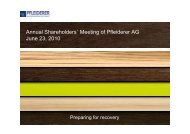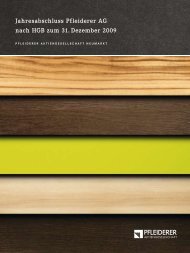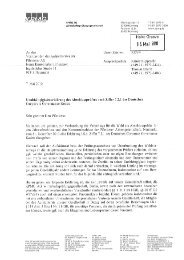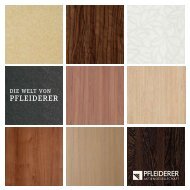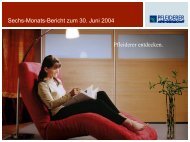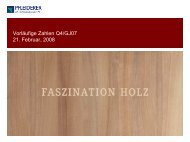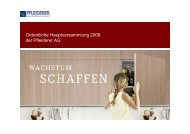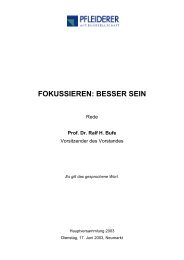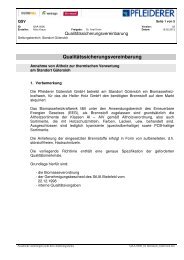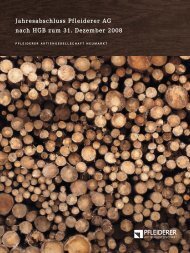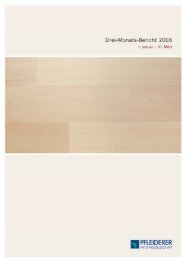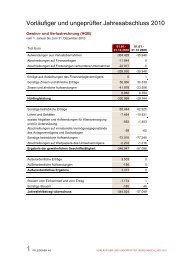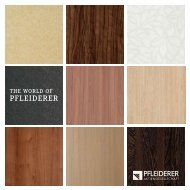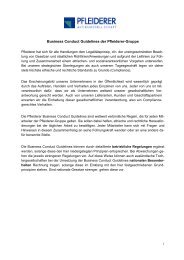PDF, 1.2 MB - Pfleiderer AG
PDF, 1.2 MB - Pfleiderer AG
PDF, 1.2 MB - Pfleiderer AG
You also want an ePaper? Increase the reach of your titles
YUMPU automatically turns print PDFs into web optimized ePapers that Google loves.
management report market report pfleiderer ag 15<br />
Wood Processing Industry<br />
The wood processing industry in central Europe comprises several big private enterprises,<br />
which operate internationally, and a large number of smaller suppliers. For several years now,<br />
the industry has been going through a process of consolidation, in particular engulfing smaller<br />
companies which only operate on a regional basis. The merging of markets throughout Europe<br />
has accelerated this process. Cost leadership, an international approach and comprehensive<br />
product ranges are the decisive factors today for the competitive edge of market participants.<br />
Following an extraordinarily good year for the engineered wood industry in 2000, particleboard<br />
capacity grew in 2001 by 0.5 million m3 to 36.5 million m3 among member countries<br />
of the European Panel Federation (EPF). However, growth in 2001 was largely due to restructuring<br />
within the industry, involving closures, re-starts, production expansions and greenfield<br />
investments. According to the European Panel Federation, Germany and Italy were the most<br />
heavily affected, with three production plants closing in each country. Only four (Austria, Czech<br />
Republic, France and Spain) of the 19 member countries reported growth in capacities.<br />
The following figures clearly illustrate the concentration process within the engineered<br />
wood industry: in 2000 there were 177 production plants producing raw particleboard for the<br />
market, each with an average production capacity of 210,000 m3 . By 2002, this figure had<br />
dropped to 158 plants, with an average production capacity of 250,000 m3 . As far as medium<br />
density fiberboard (MDF) suppliers are concerned, however, market growth has been reflected<br />
in production capacity. The number of MDF production plants in Europe grew from 48 with an<br />
average capacity of 185,000 m3 , to 54 plants with an average capacity of 210,000 m3 in 2002.<br />
When examining these figures, it must be remembered that production plants in the key countries<br />
for engineered wood (Germany, France, Italy, Spain, Belgium and the U.K.) have much<br />
higher capacities than those plants located in smaller markets.<br />
According to the European Panel Federation, continuous market growth marked by an expansion<br />
in production capacity is now at an end. For the first time, the EPF expects a decline<br />
in production by 1.5 percent to a total of 36.0 million m3 in 2002.<br />
Raw particleboard accounts for 72 percent of European production capacity, making it<br />
the most important base material, followed by MDF with 22 percent and oriented strand board<br />
(OSB)/plywood with 6 percent. Due to the many ways in which MDF board can be worked<br />
compared to raw particleboard, this material has found greater acceptance in the engineered<br />
wood market over the last two years. Consumption of MDF increased by 10 percent from<br />
2000 to 2002, while particleboard fell by 4 percentage points during the same period.



